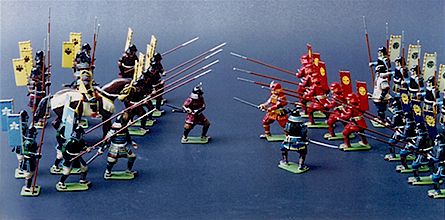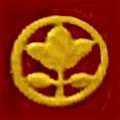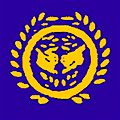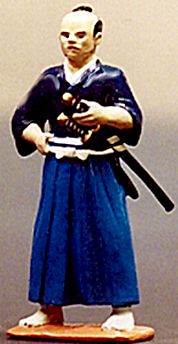

 |
 |
| HISTORY OF JAPAN (1550 - 1600) SUMMARY |
| By 1500 all Japan was wrecked by civil war. The Emperor still ruled, but in name only; the real power was in the hand of the Sh˘gun, head of the Bafuku (military government). The Shôgun in turn was generally under the control of a powerful clan, acting as puppet-master. |
| In 1560, Oda Nobunaga, a noble of humble origin who was a petty daimyo controling a small region, defeated an Imagawa army; his audacious generalship made his reputation and many warlords put their support behind him, among them was Togukawa leyasu. In 1567 Nobunaga had considerably strengthened his position. In 1568 Nobunaga entered Kyoto and installed Yoshiaki as the 15th Ashikaga Shôgun. In 1573, their relationship grew strained, and Yoshiaki was exiled. That was the end of the Shôgunate. |
| Oda Nobunaga died in 1582, killed by one of his own generals.On hearing of his death, Hashiba Hideyoshi, another of his generals, hurried back to Kyoto and took control of the capital. Togukawa Ieyasu, also a Nobunaga favourite general, retired to the eastern provinces, leaving Hideyoshi master of central Japan. |
| Togukawa Clan Togukawa Ieyasu |
 |
| 1583 - having conciliated Togukawa leyasu by giving him charge of the eastern provinces, Hideyoshi, the humble born ashigaru, was now virtually master of Japan, and was bestowed the title of Kanpaku (prime minister). |
| 1592 - Hideyoshi ordered the first invasion of Korea, the first force having some 140,000 men, with a second force of 60,000 men in reserve. |
| 1597 - second invasion of Korea. |
| Ii Clan Ii Naomasa |
 |
| 1598 - Hideyoshi died, leaving a council of regents to govern for his infant son, Hideyori. Among the regents were Togukawa leyasu, an aristocrat from the Minamoto line, and Ishida Mitsunari, who like Hideyoshi, was low-born. This had to create conflicts between leyasu and Ishida Mitsunari. Togukawa Ieyasu, having retired in his territory centred in Edo, and not having participated in the Korean invasion, had strengthened his position during the past years. At Hideyoshi's death, he was at the head of the largest standing army in Japan. |
| Date Clan Date Manasume |
 |
| In October 1600, on the plain of Sekigahara, the battle between the two armies began; several hours later, Ishida Mitsunari's army was soundly defeated, leaving Ieyasu master of Japan. Togukawa leyasu re-established a bafuku in Edo (now Tokyo), to avoid intrigues and influence of the emperor's capital, Kyoto. Three years later, in 1603, Togukawa Ieyasu was bestowed the title of Shôgun. |
| So began the Togukawa Shôgunate that was to rule Japan until 1867. |
| Hideyoshi Clan Hideyori, infant son of Hideyoshi |
 |
| Monarch Regalia's Samurai series presents some of the daimyo and commanders involved in these battles. Some of their clan and kamon (crest) are shown on this page. |
| Hideyoshi Vassal Clan |  |
| WEAPONS AND STRATEGY |
In Japan, the sword of the
samurai had for centuries been a quasi-religious symbol
and a terror to anyone not belonging to the samurai class. As the years passed, there
were considerable changes in armies. Japanese battles in the past had consisted of
ashigaru fighting against ashigaru, while skilled samurai swordsmen challenged
eachother. But tactics were changing. Large troops of common ashigaru, (soldiers below
the samurai class), armed with long spears and trained to fight in close order, had
already proved that they could defeat the noble warriors.
Gradually, the more progressive samurai gave up the conservative single combat and
acted as officers leading spear-armed ashigaru and gunners companies.
A second change, the adoption of firearms, was even more drastic.
In 1542, the match-lock musket, the teppo, was introduced in Japan. A storm pushed
a ship into a port on a small southern Kyushu island. The Lord of Tanegashima was
very impressed by the weapons carried by three Portuguese on board the ship, bought
one match-lock musket, had it reproduced. and soon it multiplied with astonishing
speed.
Beside their advantage of long-range deadliness, long training was not necessary; it
took years to learn skill with a sword, but the teppo was something any ashigaru could
learn to work within several hours, and continuous firing tactics could be learned in
a few days. This quality made them doubly attractive to daimyo who lacked large
companies of skilled samurai and ashigaru.
Nobunaga quickly realized the potential of the teppo for his growing army of untrained
ashigaru, and many of his victories were due to continuous firing tactics that he
had developed. One of these actions, the battle of Nagashino, is a landmark in the
history of Japanese warfare. Nobunaga arranged his teppos on three lines deep behind
palisades and waited for the assault of the Takeda clan cavalry. The gorgeously armoured
horsemen charging in wave after wave were mown down in a hail of gunfire, each line of
teppo stepping forward to fire after reloading.
This destruction of these gorgeously armoured horsemen by humble ashigaru firing match-lock
muskets was not lost on commanders and samurai. The cavalry became ceremonial troops,
rarely engaged in action. The match-lock muskets soon became the preferred weapon for new
growing armies.
As the Togukawa Shôgunate developed its new military bureaucracy, it began to issue a
series of edicts, which, after several years, led to break all contacts with the
outside world. In 1639, Japan was a closed country. New weapon development came to a
halt until the emperor Meiji era in 1867.
Some edicts were also aimed at controling weapons; the manufacture and use of firearms
were largely eliminated to preserve the prestige of samurai swordsmanship. |
 |